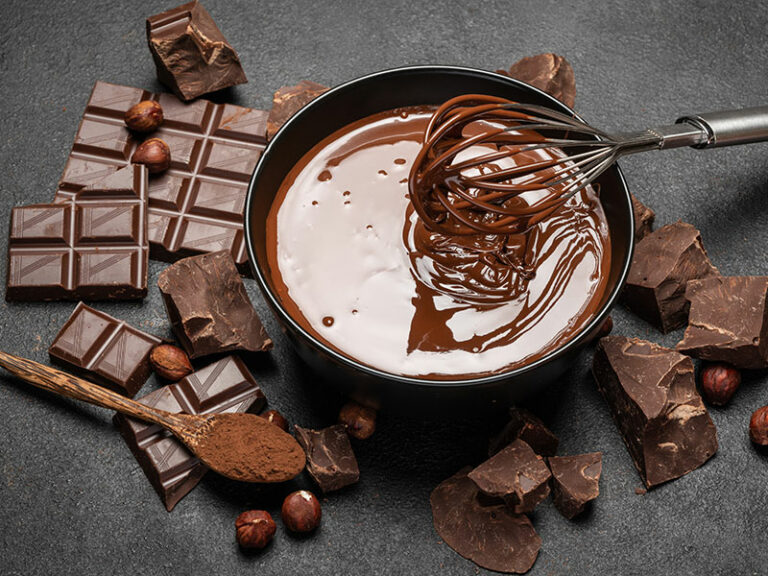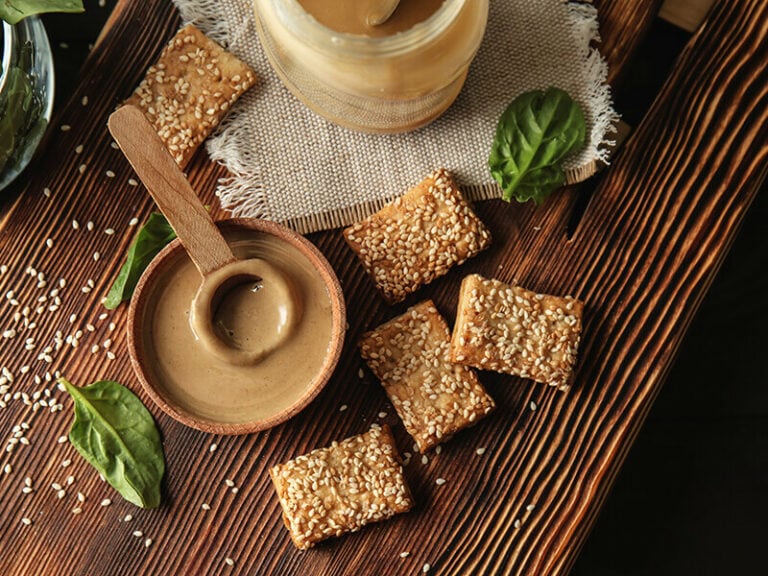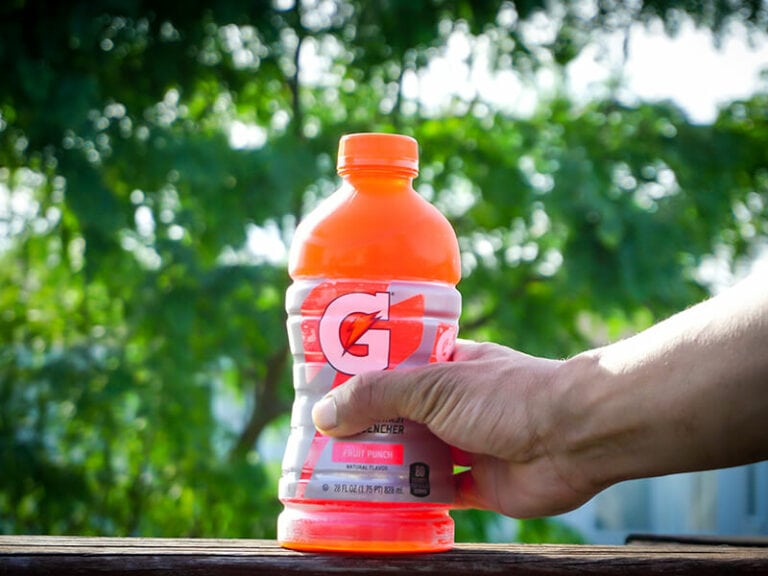When you are self questioning whether ice cream goes bad or not, it is the natural process of all kinds of foods that will give you a hint to answer this question. As long as they are foods, then it is natural for one to go bad over time.
Ice cream is undeniably the most incredible food invention of humanity; moreover, it also achieves the worldwide status of being the most popular variety of frozen dessert.
Whether young to old, men to women, or human to animal, no one could bear cold eyes to this freezing yet soft, creamy, and versatile delights. But as we love it so much, we start to wonder: Could ice cream go bad?
While manufacturers try their best to maintain and prolong the ice cream’s quality, consumers are also trying their best to store these products as long as possible at home.
But unlike other dairy products, ice cream usually has a best before date, not a use-by date or sell-by date, which might need special attention from buyers.
To make sure that you won’t eat bad ice cream and get a stomach ache, you should take time to read my post below for more information on how long your ice cream lasts and how to keep them.
So, with the help of the great me – Dr. Ice cream, let’s begin our lessons!

So, Does Ice Cream Go Bad?
For the question of whether your ice cream can go bad or not, the answer is yes. No matter what versions of ice cream you have, like many other foods, it will go bad over time.
For an unopened ice cream, the best way to check for its shelf life is the best-by date printed on the packaging body. If the packaging is fully preserved without any tear off or broken, just use it before the expiration day.
About the opened ice cream, as long as you eat it quickly, the taste and the quality will be at its peak.
If you want it to wait in the freezer for some period of time, 2 or 4 months is the appropriate time for it.
The Hard-Serve Versus The Soft-Serve One
If you’ve made ice cream with a Cuisinart maker, you’ll know a typical ice cream contains fat, sugar, milk solids, emulsifying agent, flavoring, and colorings (optional). Its base is a sterilized and homogenized liquid frozen at the right temperature while adding air to it.
From the above ingredients, you might wonder if ice cream is gluten-free or not. Although the core components of ice cream often don’t contain gluten, manufacturers sometimes put in additives that may or may not include gluten. So always be careful if you’re gluten sensitive.
There are two types of ice cream, the hard-serve and soft-serve, while they are similar in the recipe’s ingredients, the percentage of each ingredient varies depending on the type, thus the soft-serve and hard-serve have different storage conditions.
Hard-serve contains 0% – 18% milk fat, 20% cream combining with additional sweeteners and flavoring additives to create the preferred flavor.
The liquid to make hard ice cream will go through the continuous process of being churned and aerated while cooled and frozen to produce overrun (or air volume). Eventually, the product is freeze-dried at around -15o Celsius.
Soft-serve has a similar formula to the hard serve one but less milk fat (3% – 6%) and has 33% – 45% more air by volume to create a fluffy and light texture.
Being made by several types of mixes inside a soft-serve machine, the mixture of soft ice cream is injected air while being churned and frozen at -4o Celsius to boost the overrun.
The final product will be stored in the machine’s serving chamber at around 30 Celsius.

The Typical Ice-Cream Misunderstanding That The Majority Made
As long as my ice cream is frozen, then it can be used to doomsday-Wrong!
As long as I put my melted ice cream back in the freezer, it will be all good again- You are done for…
The ones who follow the conspiracy theory might think that the best before date is just a lie that the manufacturer made, implying that we should discard our lovely treat while it still tastes just fine.
Well, congrats cause you are wrong again. Have a little faith in humanity; That specific date is there for a reason!.
These Are The Problems And Solutions Of Your Bad Ice Cream
Regularly, ice cream will last for several months when kept in an appropriate cold condition. However, ice cream does go wrong due to some of the reasons below.
Bacterial Contamination:
It happens when the ice cream is opened or melted.
Since the day you opened your ice-cream lid, the clock starts ticking faster towards the expiration date.
And since it is opened, the ice cream becomes vulnerable to bacteria. If you ever wondered whether sugar can get spoiled, then ice cream can be an example for your answer. Also, the moisture level in ice cream will change due to air humidity and heat, affecting its texture.
Another problem when leaving ice cream outside, though it rarely happens, is that your placing spot could attract insects, for instance, an army of ants.
The Solution To Bacterial Contamination
If taken out, the ice cream should be put back in the freezer ASAP to prevent the Temperature Difference and Insects from changing the ice cream texture and taste.
Melted Then Refreeze Ice Cream
In the second scenario, eating the melted then refreeze one is more dangerous because it could lead to food poisoning, as certain bacteria have the chance to grow and multiply when they are getting out of the freezer’s freezing temperatures.
Solution For The Melted Then Refreeze Ice Cream:
One should not eat the melted then refreeze ice cream for safety reasons (stomach ache, food poisoning, etc.).
It is recommended that you should scrape off the melted part (to your stomach!) before putting the ice cream back.
Freezer Burn
The difference between frozen food products is that they are less likely to spoil because of mold, as bacteria can not grow in freezing temperatures.
However, there is a process called Freezer Burn, which prevents these frozen products from being immortal.
Freezer Burn happens when moisture seeps into your ice cream, evaporates, and forms tiny ice crystals on both the surface of the ice cream and the inner lid.
Solution For A Freezer Burn One:
Because this process happens when moisture invades, we just need to find a way that keeps it from penetrating our delights. The first method is to lower the temperature.
The second one is tightly sealing the ice cream container by covering it with wax paper or other similar alternatives before closing the lid. Another method is placing the ice cream container upside down when storing. Watch the short video below for more information.
You can see this video to know more:
How To Know If Your Ice Cream Is Spoiled Or Not
While we tried to store these products as long as possible in the house, it is sometimes confusing to know whether the ice cream is still edible or not. Here are two obvious signs to spot the spoiled one:
By Looking At It:
The change in the ice cream texture was easy to spot even from a glance at the combination of the gooey and small ice shard floating in a liquid-like substance.
By Smelling It:
If, at some point in the ice cream’s life, one of its ingredients could become moldy. Although the mold could not actively grow, it could not be eradicated by the freezing process; hence a musty odor could be smell.
How Long Does Ice Cream Last?
Since there are various conditions needed for optimal preservation of ice-creams’ shelf-life, which are complex and hard to achieve in normal conditions, one might want to acknowledge the best consumption date and store tips for best taste.
As always, frozen dessert spoils when only one of the ingredients within the recipe gets moldy. Furthermore, if you are making a dish containing ice cream, it will be the first ingredient to spoil.
If the container is unopened, the ice cream is safe to eat for 3 to 4 months. After that, let your trash bin eat it!. If it has already been opened, try to finish it in one month.
As for sherbet, both the opened and unopened sherbet can last one month longer than ice cream.
| Unopened | Freezer |
| Ice cream lasts for | 2-3 months |
| Sherbet lasts for | 3-4 months |
| Opened | Freezer |
| Ice cream lasts for | 1-2 months |
| Sherbet lasts for | 2-3 months |
How To Store Your Ice Cream
For optimal taste and quality, remember to adopt the helpful knowledge below to extend the shelf life of this treat [1].
The Best Advice For Your Ice Cream
‘Finish Your Ice Cream In One Sitting!’ is the ultimate solution to prevent freezer burn, but if you can’t, remember ‘Sharing is caring!’.
Once you have opened the ice cream, it should be consumed within two months in order to keep its optimal taste and texture.
Double-Check The Temperature For Storing Ice Cream:
A temperature of 0 degrees Fahrenheit or below is recommended because the lower your temperature is, the higher possibility of averting freezer burn.
Moreover, don’t forget to check and adjust your freezer’s temperature so that it remains below 0 degrees Fahrenheit for the best ice cream preservation.
The Place To Store Your Ice Cream
The back of the freezer is the best place to store your ice cream.
This place gets the least affected by the temperature change every time you open the freezer.
Avoiding The Mixing Of Flavors
Because the strong smells in the cooling area could ‘migrate’ fast into the freezing spot. It will turn into an unpleasant experience when your favorite ice cream is mixed with the odors from stew or onion.
Fortunately, you could prevent this from happening by placing a box of baking soda or the already used tea bags. Applying these handy tricks will make you successfully avoid the mixing odors from entering your delights.
Preventing The Air From Getting In The Product
This is to avoid the cold air and freeze burn from affecting your ice cream taste and texture.
You could do this in 3 ways: First, use an airtight container or a plastic box with a lid. Secondly, you could put a thin plastic wrap on top of the ice cream’s surface. And thirdly, using special containers made for storing ice cream, such as Tupperware.
FAQs
Some frequently asked questions about ice cream, explaining its everyday usage, the potential risk a person might take when eating a spoiled one, and why that happens.
Is Your Ice Cream Still Good?
Even though ice cream is frozen food, which is less likely to spoil and get moldy, it still has the problem of being expired or unedible due to freezer burn, bacteria contamination, or inappropriate keeping conditions.
Through this post, I hope you find the most appropriate way to store your ice cream and recognize the insufficient evidence from the spoiled one.
If you have any other helpful ice cream’s experiences, please update me via the comment section below.







